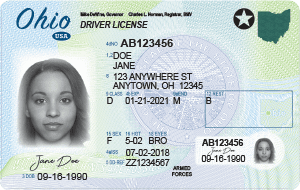The U.S. Department of Defense (DOD) has granted a joint petition filed by the National Automobile Dealers Association (NADA) and the American Financial Services Association (AFSA) to withdraw Question and Answer (Q&A) 2 from a December 2017 Interpretive Rule that sought to define the scope of the motor vehicle financing exclusion to the Military Lending Act (MLA).
Q&A 2 interpreted the MLA in a way that effectively prevented auto dealers from making Guaranteed Asset Protection (GAP) Waiver coverage available to service members, who previously were able to voluntarily purchase GAP waiver to protect against the personal financial risk that arises when a vehicle is declared a total loss. As a result, DOD’s issuance of Q&A 2 unnecessarily exposed service members to significant liability by effectively eliminating their ability to adequately protect themselves from incurring financial losses in the event of the total loss of a vehicle.

In January 2018, NADA and AFSA jointly petitioned DOD to withdraw Q&A 2. Over the next 25 months, NADA and AFSA worked tirelessly to demonstrate to DOD that this interpretation: impermissibly narrowed the scope of the motor vehicle financing exclusion that Congress created when it enacted the MLA; was issued in an uninformed and procedurally-deficient manner; and was harming service members and undermining military readiness.
NADA and AFSA also explained that attempting to comply with the MLA as it relates to credit-related products was not economically feasible because one of the restrictions that applies to non-depository institutions like auto dealers was their inability to take a security interest in the vehicle collateral.
In explaining its decision to withdraw Q&A 2, DOD stated that it “finds merit in [the security interest] concern and agrees additional analysis is warranted.”
NADA President and CEO Peter Welch, and AFSA President and CEO Bill Himpler issued the following joint statement in response to DOD’s action: “This is a great victory for military service members and their families. It is critically important for members of the military to have the ability to purchase valuable credit-related products such as optional GAP Waiver protection when they finance the purchase of a new vehicle.”
Hudson Cook Chairman Michael Benoit commented further: “Because the effect of the DOD withdrawal is a recognition that auto financing contracts that include credit-related products like GAP Waiver are within the scope of the motor vehicle financing exclusion, I expect that auto finance companies will again feel comfortable purchasing contracts from dealers that include GAP Waiver.”







